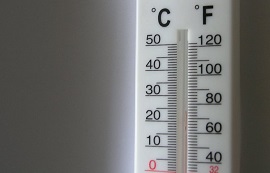Most homeowners have experienced uneven temperatures in their property. Almost every house has one room or area that seems freezing cold in winter or swelteringly hot in summer, regardless of the thermostat settings. Most homeowners make the assumption that this uneven temperature is simply a symptom of an old HVAC system or a quirk of their property layout, but this is not necessarily the case, and you can minimize the effects of this temperature variation.
The Causes of Uneven Temperatures:
There are a number of causes of uneven temperatures in your home. Some of the most common underlying causes include air leaks from unsealed ducts or bad insulation. You may also find that your uneven temperatures are due to an undersized HVAC system, energy inefficient windows or closed vents creating restricted airflow. The main problem you may find is determining the particular cause in your property. Fortunately, professional HVAC specialists have the knowledge and experience to assess your home and determine the underlying cause.
Correcting the Problem:
Fortunately, there is no need to simply put up with the nuisance of uneven temperatures. The precise method of addressing the problem will depend on your property, but there are some steps that can boost the energy efficiency of your home and eliminate temperature variations.
Sealing Your Ducts:
According to research conducted by Energy Star, up to 20% of the treated air in your ducts is actually wasted due to gaps and leaks in the system. An energy audit can be performed to determine the location of any air leaks and drafts that can cause temperature variances.
Sealing the ducts can also help to reduce your energy bills and prolong the lifespan of your system. Imbalanced airflow places your HVAC system under additional strain; that can compromise its lifespan. Although there are DIY measures, professional duct sealing can be far more effective at reducing energy loss and minimizing any imbalance in airflow. When the ductwork has been properly sealed, you will find the airflow around the home is improved. This will allow the HVAC system to operate more effectively.
Upgrading Furnace and Air Conditioning Units:
The uneven temperatures in your home could be a result of an undersized or underperforming HVAC system. This issue can also lead to the need for more frequent repairs and higher energy bills. The reason is that smaller units try to compensate for the lack of capacity, placing the entire system under strain.
Although upgrading your furnace or air conditioning unit may seem like a costly investment, you may find that your home is more comfortable, and you save money in the long term. Professional HVAC technicians will be able to assess your property and calculate the correct size of unit to meet your needs. You may also benefit from a variable speed motor, that will allow greater airflow control and more precise temperature control. A newer model is likely to be more energy efficient since there have been great industry improvements in recent years. Modern systems have a greater ability to maintain even temperatures throughout the home.
